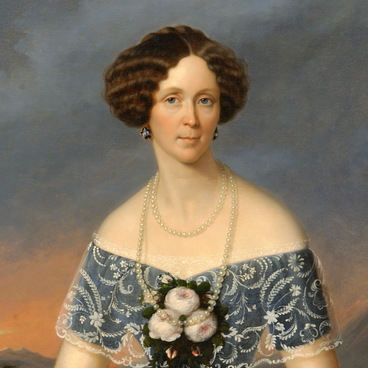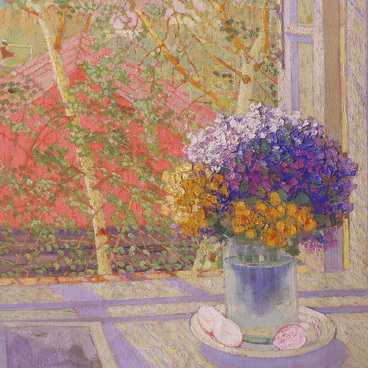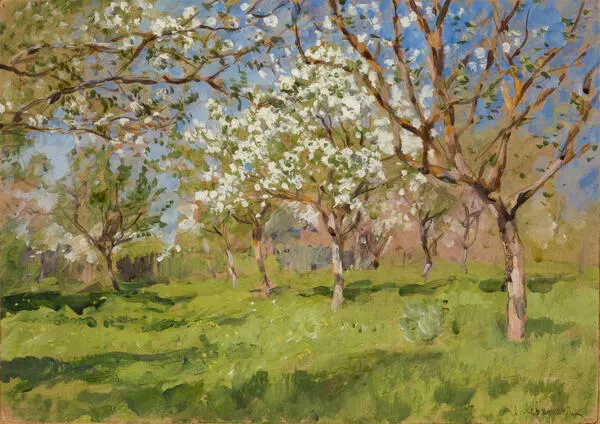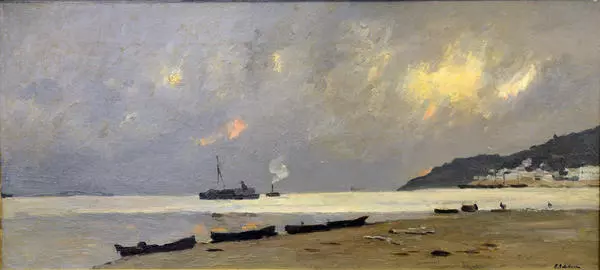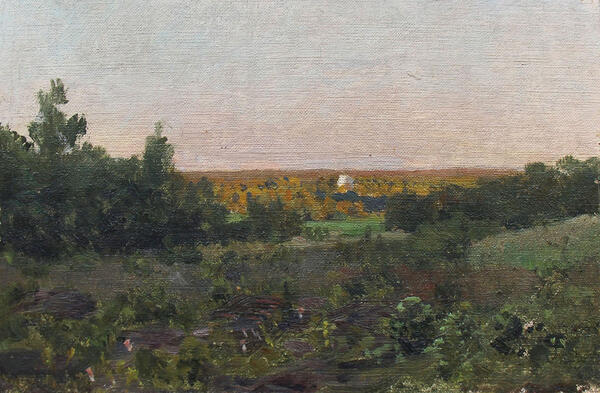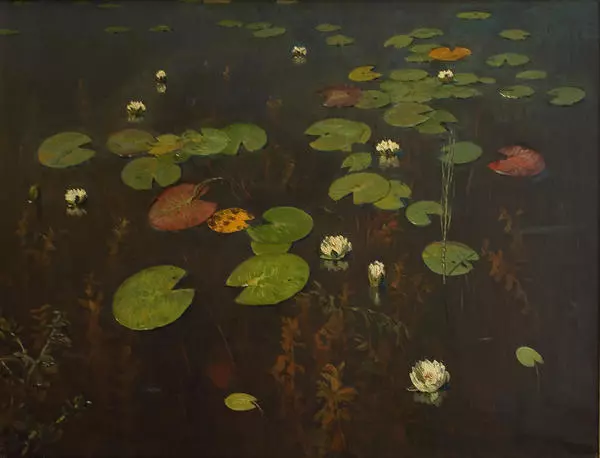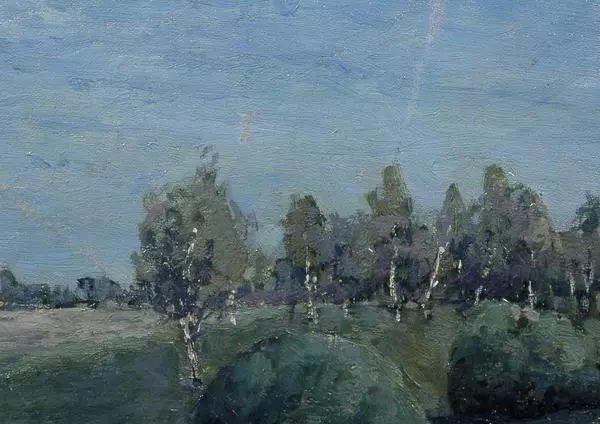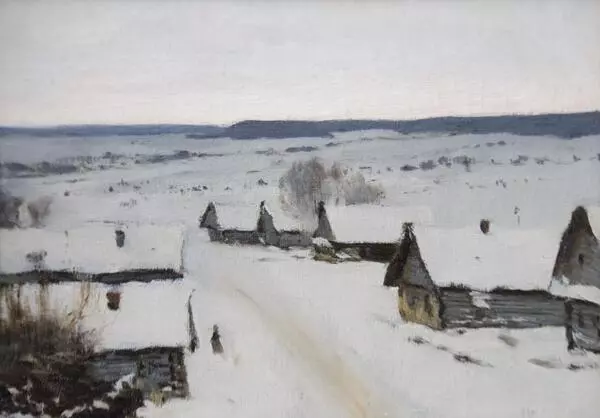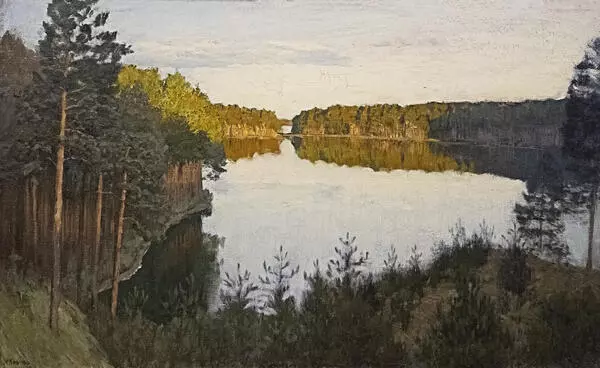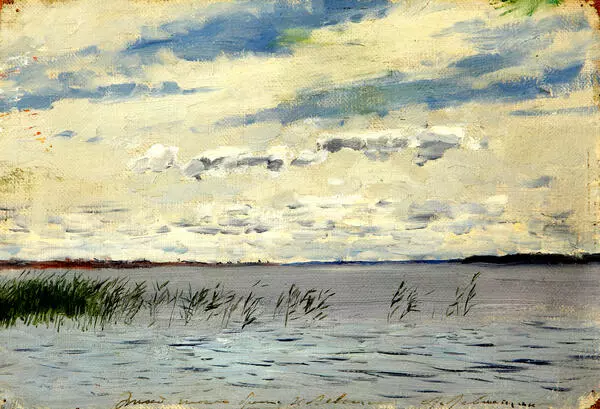A small study Birches, Forest Edge is the only work of a Russian landscape painter Isaac Levitan in the collection of the Stavropol Museum of Fine Arts.
Isaac Levitan was born in 1860 in the Kingdom of Poland to a poor but educated family. In the late 1860s, his family moved to Moscow where he enrolled in the Moscow School of Painting, Sculpture and Architecture. Four years later, his mother died, and in two more years he lost his father. Sixteen-year-old Isaac with his brothers and sister found themselves on the verge of abject poverty, but in March 1977, he was awarded a silver medal and received 220 Rubles for his landscapes displayed at a public exhibition. At the time, he was a student in Alexey Savrasov’s class, master of intimate-style landscapes. His other teachers were Vasily Perov and Vasily Polenov.
In his artwork, Levitan combined the vastness of Russian landscape with the sadness of his own reality. Anxiety, melancholy, and grief made Levitan’s landscapes ‘atmospheric or mood landscapes’. That definition applied even to his small studies which essentially were nothing other than quick sketches created by the artist for future work. Scholars believe that Levitan’s artwork put an end to artistic pursuit of landscape masters of the Itinerant Art Group. An art expert Pavel Muratov dubbed Levitan “the last master of Russian landscape” because that school of painting was associated with “a certain period in Russian life” and therefore “had no further development”.
This study, Birches, Forest Edge is as simple as the motifs in most of his works. Levitan’s artwork is elucidation of nature by means of painting, both diverse and flexible. His colors are lustrous, rich, and contrasting, but his favorites are tonal colors. In Birches, Forest Edge, Levitan managed to achieve softness in transitions of shades within one color and color mix. He delicately elaborated the shades of green, from olive-green to silvery. Combined with the soft glimmer of birch trunks, that effect evokes the mood of unusual stillness and deep sadness of the birch forest, motionless in anticipation of the coming night. In the study Birches, Forest Edge, the artist achieved tonal integrity of the earth and the sky, which was his goal.
In 1900, at the age of 39, Levitan fell ill and soon died leaving forty unfinished paintings and several hundred sketches in his studio.
Isaac Levitan was born in 1860 in the Kingdom of Poland to a poor but educated family. In the late 1860s, his family moved to Moscow where he enrolled in the Moscow School of Painting, Sculpture and Architecture. Four years later, his mother died, and in two more years he lost his father. Sixteen-year-old Isaac with his brothers and sister found themselves on the verge of abject poverty, but in March 1977, he was awarded a silver medal and received 220 Rubles for his landscapes displayed at a public exhibition. At the time, he was a student in Alexey Savrasov’s class, master of intimate-style landscapes. His other teachers were Vasily Perov and Vasily Polenov.
In his artwork, Levitan combined the vastness of Russian landscape with the sadness of his own reality. Anxiety, melancholy, and grief made Levitan’s landscapes ‘atmospheric or mood landscapes’. That definition applied even to his small studies which essentially were nothing other than quick sketches created by the artist for future work. Scholars believe that Levitan’s artwork put an end to artistic pursuit of landscape masters of the Itinerant Art Group. An art expert Pavel Muratov dubbed Levitan “the last master of Russian landscape” because that school of painting was associated with “a certain period in Russian life” and therefore “had no further development”.
This study, Birches, Forest Edge is as simple as the motifs in most of his works. Levitan’s artwork is elucidation of nature by means of painting, both diverse and flexible. His colors are lustrous, rich, and contrasting, but his favorites are tonal colors. In Birches, Forest Edge, Levitan managed to achieve softness in transitions of shades within one color and color mix. He delicately elaborated the shades of green, from olive-green to silvery. Combined with the soft glimmer of birch trunks, that effect evokes the mood of unusual stillness and deep sadness of the birch forest, motionless in anticipation of the coming night. In the study Birches, Forest Edge, the artist achieved tonal integrity of the earth and the sky, which was his goal.
In 1900, at the age of 39, Levitan fell ill and soon died leaving forty unfinished paintings and several hundred sketches in his studio.
